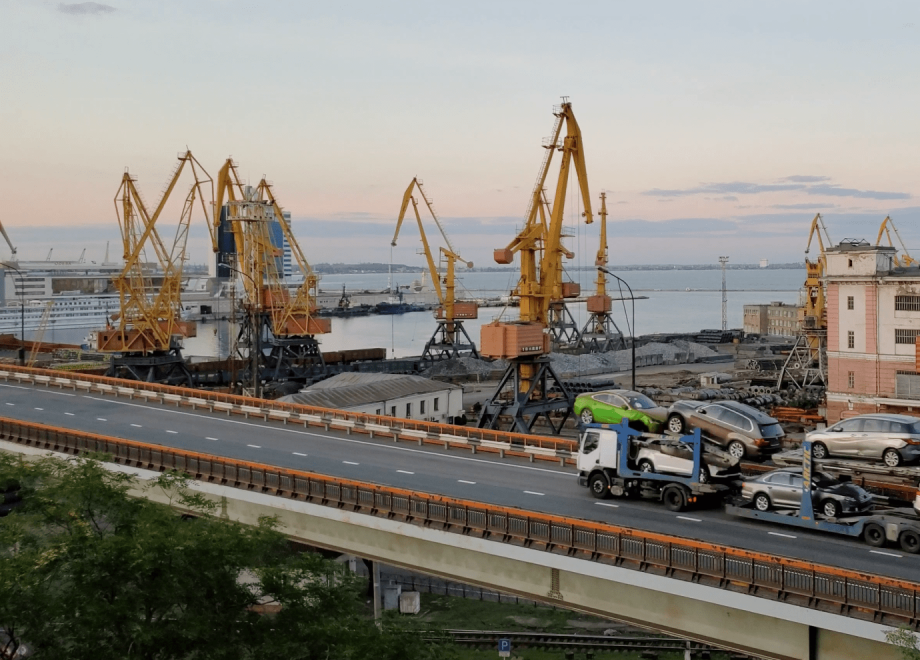
Professionally transporting vehicles from auction to their new homes across the seas is a cost-efficient business, but it can be pretty complicated to plan out and manage. Drawing from the relevant industry practices, this guide will help facilitate the process of car transportation from auctions to port for car hauling business owners, managers, dispatchers, and drivers, with a focus on efficiency and technology.
Why So Many Cars Are Shipped Abroad
The international demand for vehicles, especially those labeled "for export only," fuels a thriving business. Cars that are common in the U.S. can be rare elsewhere, fetching high prices abroad. This eager market never sleeps, spawning the regular need for car shipping from auction.
For instance, models not shipped by manufacturers to certain regions due to restrictions can be highly sought after in distant markets. This lays the ground for another demanded business, one for exporting used or auctioned vehicles to places with different levels of vehicle availability and regulations.
The Auction-to-Port Car Transportation Process
The journey begins once a vehicle is won at auction. The paperwork, centered around the vehicle's VIN, is prepared for transport. For the vehicle to be legally exported and accepted at its destination port, its VIN code registration and other paperwork are prepared and processed.
Part of this preparation involves conducting a thorough inspection and sealing it up with a report that verifies the vehicle's condition before loading it for auction vehicle transport. This formality helps avoid disputes and maintain compliance with both export and import regulations.
Vehicles destined for export often require specific documentation, including ownership verification and the payment of any applicable taxes or fees at the destination port. Given the complexity of international transport laws and the need for careful coordination, you could certainly use a pro tip or two.
Auction-to-Port Vehicle Shipping Pro Tips
From some basic advice to more insightful tips and things that you can easily miss, here are the ten things you should keep in check when organizing an auction vehicle transport logistics.
.png)
Analyze the destination and customs
First things first, for vehicles being exported, it is essential to understand the destination country's import regulations and customs requirements. Some countries may require specialized inspections or specific modifications to the vehicle before it can be imported. For instance, you need to compose a separate hazardous material documentation if the shipped car has fuel residuals or poor battery condition.
Other necessary documents commonly include:
- Title and registration
- Bill of Lading (BoL)
- Vehicle inspection report
- Insurance certificate
- Shipping receipt
- Dock receipts
Double check documentation and inspection
Before a car can be transported from auction, it must go through a detailed inspection, which is registered in a descriptive report. This is where you outline the vehicle’s condition pre-transport. Make sure to use checklists and media — any existing flaws, damage, or other details must be photographed and documented.
Here are the inspection aspects to cover:
- Exterior condition:
- Body and paint (check for scratches, dents, rust, and paint condition)
- Glass (inspect all windows, windshields, and mirrors for cracks, chips, etc.)
- Lights and lenses (make sure headlights, taillights, turn signals, and brake lights are intact and functional)
- Tires and wheels (check the tire tread depth, wear patterns, presence of bends, etc.)
- Interior condition:
- Seats and upholstery (look for tears, stains, or excessive wear in the fabric or leather)
- Dashboard (make sure all gauges and controls are present and intact)
- Carpets and mats (check for cleanliness, wear, and damage)
- Odors (yes, smells should be checked, too, especially if they indicate mildew, mold, or smoke damage)
- Mechanical condition
- Engine (check for leaks, inspect oil level, and don’t forget to heed strange noises)
- Transmission (it must operate smoothly and noiselessly as well)
- Brakes
- Suspension
- Electrical systems
- AC and heating
- Audio system (radio, speakers, and any other multimedia systems must be functional)
- Power features (test power locks, windows, and seats)
- Fluid levels (all fluid levels must be checked)
- Oil
- Coolant
- Brake fluid
- Power steering fluid
- Undercarriage and frame
- Look for signs of damage, rust, and structural integrity issues
- Documentation
- The vehicle’s VIN code must be timely verified to match the auction and title documents
- Extra features
- Sunroof/moonroof
- Special equipment (any extra stuff mentioned in the title or auction documents)
Keep in mind that a car may be damaged during transportation, in which case, the whole inspection report will serve as your legal protection and save you from difficult client disputes.
Choose the right transportation mode
Capitalizing on potential mid-transportation damage, consider your vehicle protection options and available shipping modes. Car transport from auction most frequently happens via open car carriers, which are the most cost-effective option. However, for high-value vehicles, enclosed transport offers additional protection against the forces of nature and potential road debris. This moment is overlooked all too often.
Mind special arrangements for non-running vehicles
Transporting non-running or inoperable vehicles calls for carriers equipped with the right tools for loading and unloading vehicles of different types and sizes, such as:
- Winches and ramps
- Forklifts or crane lifts
- Tie-down straps and chains
- Flatbed tow trucks or trailers
- Dollies, etc.
But the most important thing is to communicate the vehicle's condition to the transporter in a timely manner so that the appropriate service can be arranged beforehand.
On top of all the above-mentioned documents, an inoperable car may also require a condition report (focused on core inoperability aspects) and a release form (indicating your accepting the vehicle into your care, thus becoming authorized to ship it).
Use technology for efficiency and control
Digital tools and platforms, such as Transportation Management Systems (TMS), can streamline the auction-to-port process in a major way — think about it. Today’s platforms offer features like real-time tracking, digital paperwork, and custom route planning, all of which contribute to an overall smoother transporting experience.
A TMS can be integrated with an existing system if you already have one. Up-to-date tech tools give you long-term scaling opportunities by accumulating tons of invaluable data after tracking workflows, generating reports, etc.
Plan ahead for pickup and delivery
If you haven’t handled the auction-to-port shipping experience yet, know that auctions typically have a tight window for vehicle pickup, usually within a few days after the auction ends. This is one thing to always coordinate in advance and we can’t but emphasize it. An optimal pickup/delivery schedule will help you prevent storage fees at the auction lot and achieve the most timely/cost-efficient auction vehicle transport to the port.
Sync up all parties
Last but not least, for smooth hauling, it is essential to maintain open lines of communication with all parties involved — the auction house, transportation dispatchers and managers, and destination port. Too obvious? Not always. Many providers still tend to save expenses on additional means of communication (like all-in-one management systems, custom and integrated messengers, etc.). They risk tapping into expensive delays and gaps in meeting requirements.
Leveraging Technology for Efficient Transportation
Systems like Haulk TMS enable real-time driver tracking and more accurate route planning based on smart, real-time reading of road situations.

Such solutions open new ways a car hauling business can handle car transportation from auctions to port as well as manage a range of other operations. From scheduling pickups to managing documents and tracking shipments, a specialized TMS can address the unique challenges of car transportation.
All of this and more minimizes your transportation costs and improves service quality in the long run. Try a free trial right now!
In Summary
Transporting cars from auctions to ports time- and cost-efficiently requires an understanding of the global market, meticulous planning, and the right technological tools. By focusing on these key areas, car hauling businesses can enhance this particular type of operation, capitalize on international demand for vehicles, and tackle cross-border transportation with confidence at the same time.
Looking for more input? Feel free to contact our specialists to discuss how you can improve logistics through technology, namely, the integration of Haulk TMS.









